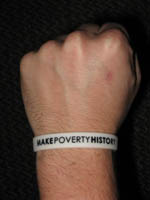News
Poor and Poorer
Apr 28, 2009
 The method our nation uses to define and identify families living in poverty is flawed and obsolete, and, because it radically underestimates the income necessary to purchase basic necessities, it provides misleading intelligence regarding the numbers of our fellow citizens who are without those basic necessities.
The method our nation uses to define and identify families living in poverty is flawed and obsolete, and, because it radically underestimates the income necessary to purchase basic necessities, it provides misleading intelligence regarding the numbers of our fellow citizens who are without those basic necessities.
A three-page report from the National Center for Children in Poverty (NCCP), entitled Measuring Poverty in the United States, admirably summarizes what’s wrong with the way we measure poverty:
- The official measure is the same across the continental U.S., even though cost of living varies considerably among the 48 states and between urban and rural communities.
- The official measure is based on outdated assumptions, one being that families spend about a third of their income on food. Today, that proportion has dropped to around one-seventh.
- Income is counted before subtracting payroll, income, and other taxes, overstating income for some families.
- On the other hand, the federal Earned Income Tax Credit is not counted either, underestimating income for other families.
- In-kind assistance such as food stamps and Medicaid is not counted.
- Work-related expenses, such as child care and transportation, are not included in the list of basic necessities upon which the poverty levels are based.
The federal poverty threshold for a family of four in 2008 is $21,200. The NCCP figures range from $43,376 for a family of four living in rural Iowa to $67,692 for a family living in New York City.
According to the U.S. Census, almost 24 million Americans in 2006 subsisted on family incomes under $15,0001 (the current federal minimum wage of $6.55 per hour provides $13,624 in gross income to a full-time American worker). Extrapolation from these 2006 Census Bureau figures indicates that over 40 million Americans were then subsisting on less than the conservative NCCP minimum. This was before millions lost their homes and their jobs and everyone saw a significant decline in family wealth after the onset of the recession in December 2007.
It is not unreasonable to estimate from these figures that nearly one in three Americans are, or will soon be, living below an income level necessary to provide basic necessities. Only systemic change, wrought by an attitude adjustment of historic proportions, restoring the people to the center of American governance, can save us.
____________________
1 Income, Expenditures, Poverty & Wealth: Household Income, from the U.S. Census Bureau, accessed Apr 25, 2009.
Copyright © 2008 All Together Now.